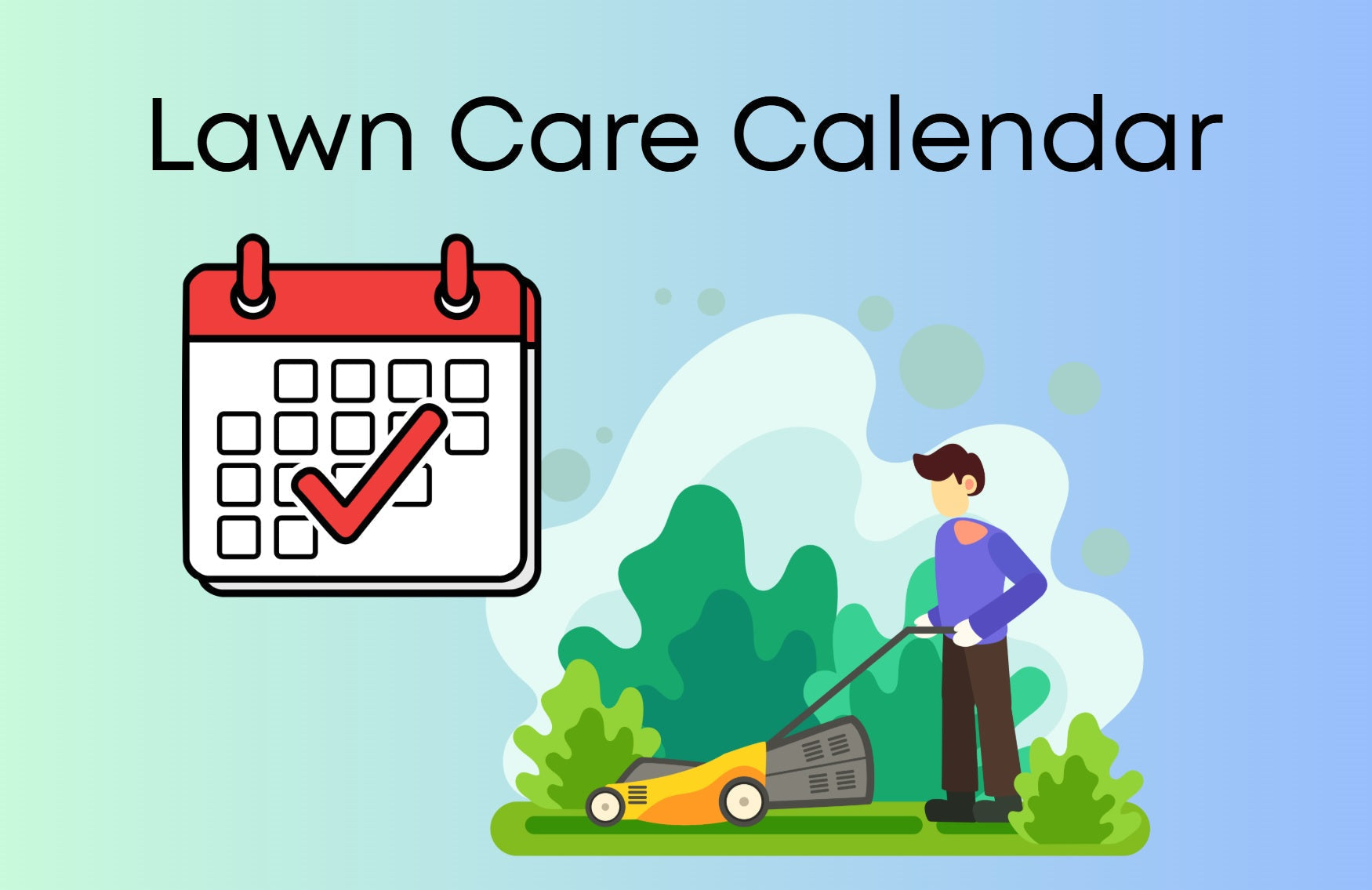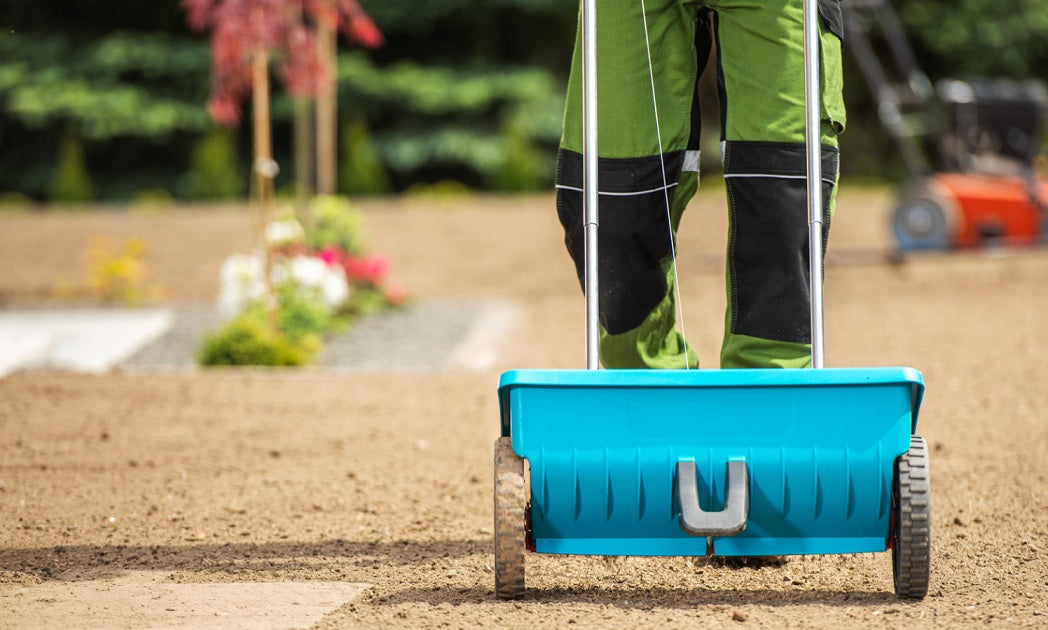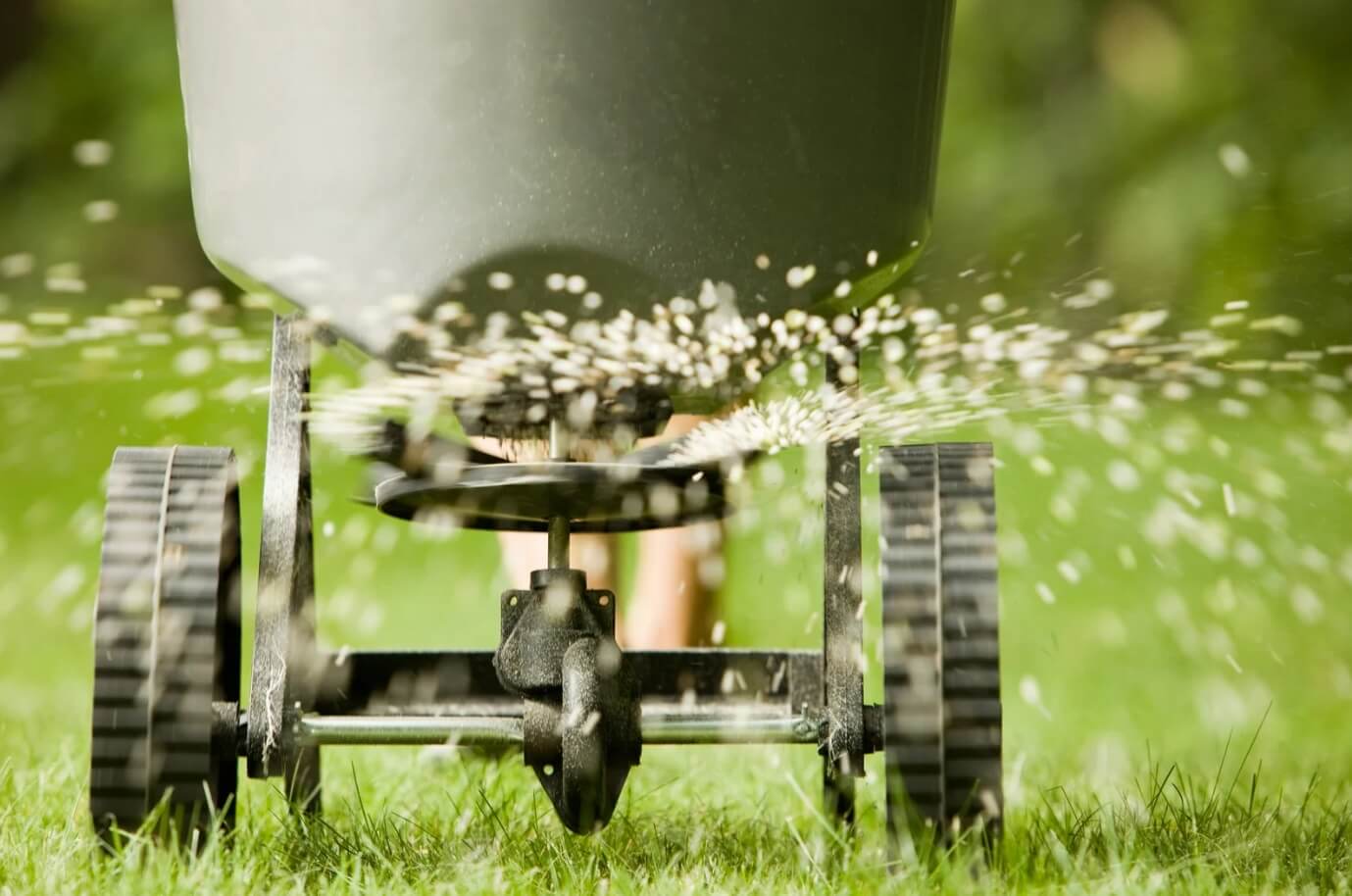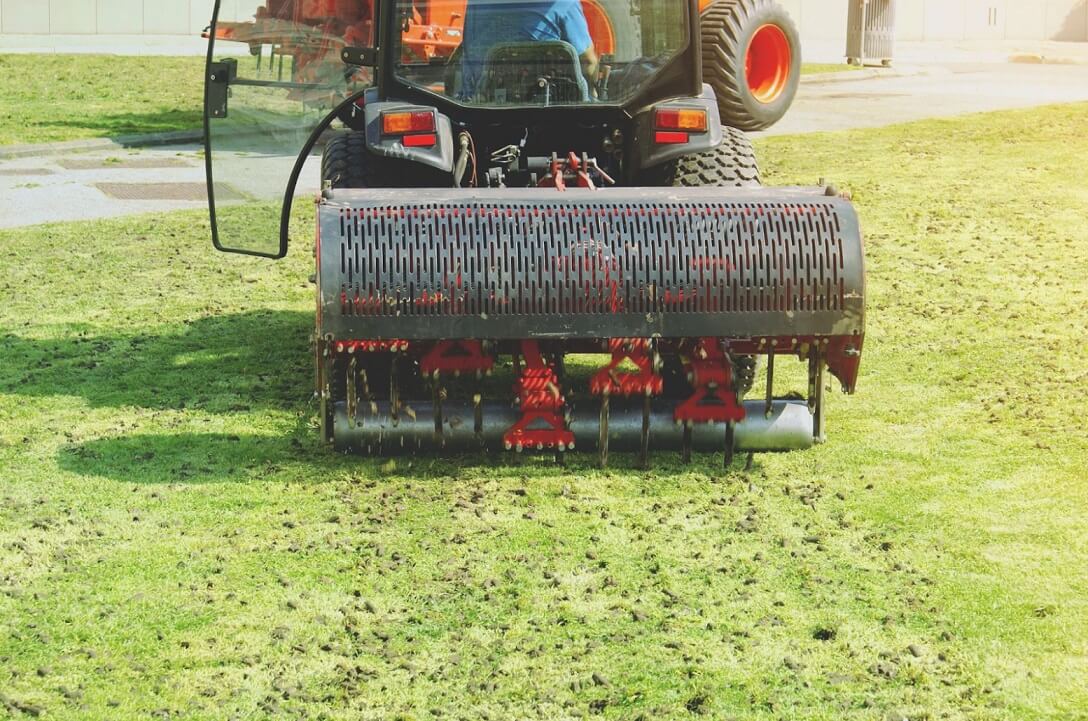This is one of the most asked questions by homeowners and lawn enthusiasts: when should I water my lawn so it stays healthy and evenly green throughout the season?
Experts agree that the best time to water your lawn is early in the morning, when the temperature, sunlight, wind, and soil conditions are most favorable for grass growth. But what time exactly counts as early morning? How often should you water? And what happens if you water at the wrong time of day?
Read on this blog to understand why water timing matters, the ideal hours to water, how much water your grass needs, and how to adjust your schedule across seasons for the best results.
Why Timing Matters for Watering Grass
Grass is a living ecosystem, and we know that environmental conditions shift throughout the day – temperature, wind strength, and sunlight intensity– each of these factors impacts how water behaves in the soil and how grass uses it.
Evaporation Losses
Let’s say you water when the sun is at its peak, and it's windy outside, much of the water intended for root absorption evaporates before it reaches its target. That means the grass does not get the required moisture, and you end up wasting water.
Water Efficiency
Cooler/moderate temperatures, lower wind, and gentler sunlight allow water to penetrate the soil rather than being lost. These optimal conditions ensure the grass roots receive the moisture they require for healthy growth, and you use less water for the same result.
Disease Prevention
Yes, water is necessary for healthy grass and soil, but when water sits on the surface of blades for long, it creates ideal conditions for fungal issues. The excess surface moisture may act as a feed source for pathogens, increasing the risk of diseases in the lawn.
Best Time of Day to Water Grass
After evaluating the key factors and reviewing expert guidance, the consensus is that morning is the ideal window to water your lawn. If that isn’t feasible, there is a viable secondary alternative, late afternoon.
Optimal Window
To be precise, the best time to water grass is between 5 a.m. and 10 a.m. In most regions, this period checks every condition required for effective watering:
- The air temperature is still relatively cool, reducing evaporation.
- Winds are calm, so water spray stays where you intend and doesn’t drift away.
- The sun is rising but not yet at full strength. Water has enough time to soak into the soil and reach the grass roots.
- Grass blades receive moisture early, and they have the full day ahead to dry off, which helps reduce the risk of fungal problems.

Secondary Window
If it’s not possible to water that early, the second alternative is late afternoon or early evening, roughly between 4 p.m. and 6 p.m. At this time, temperatures start to fall, sunlight becomes less direct, and evaporation decreases noticeably.
The Times to Avoid for Watering Grass
Other than the two recommended windows, midday and night are the worst times to water your lawn.
Midday Watering
When you water around noon, the temperature is at its peak. Much of the water you apply will evaporate before it even reaches the root zone, meaning your lawn gets little benefit while you waste both time and water.
Moreover, there’s a risk that certain water droplets (that remain on grass blades) can intensify heat through sunlight reflection, and cause leaf burns. Research in this area shows that burning doesn’t happen in normal cases; it’s a rare possibility and subject to extreme conditions.
Night Watering
Nighttime watering seems like a convenience, but it is a big NO. It leaves the grass wet for too long. The excess moisture that stays on the blades and soil surface creates ideal conditions for fungal diseases, such as brown patch and dollar spot. Over time, this can weaken the turf and encourage weed growth, as these thrive in damp environments.
How Much and How Often to Water
We have established the right time to water the grass. The next question is how much water your lawn actually needs and how often it should be watered.
There’s a key concept here called Evapotranspiration (ET). It is the total water lost from the lawn through evaporation from the soil surface and transpiration from grass blades. It’s actually the rate at which water leaves your lawn due to sunlight, wind, temperature, and humidity.
The amount of water lost through ET is the same amount that needs to be replaced through irrigation to maintain healthy growth. Besides the environmental conditions, ET varies greatly by grass type.
Consider Grass and Soil Type
In our lawn care guide, we mentioned earlier, grasses generally fall into two broad categories: cool-season and warm-season grasses.
The cool grasses have higher ET, so they need more frequent watering.

Warm-season grasses have a lower ET rate and better drought tolerance. They can handle slightly less frequent watering without visible stress.

Similarly, soil type also affects the water requirements. For instance, sandy soils drain quickly and may require shorter, more frequent sessions. Clay soils retain water longer, so you need to reduce frequency but ensure enough soaking depth.
1 to 1.5 inches of Water Per Week
In general, most lawns need about 1 to 1.5 inches of water per week, including rainfall, to offset the moisture lost through ET. How you achieve that depends on your schedule and system.
Some homeowners water around 30 minutes per day to deliver roughly 0.5 inches of water. That takes them three such sessions in a week to reach near the 1.5-inch mark. You can slightly shorten the sessions to reach that mark, but deep, less frequent watering encourages roots to grow deeper, which makes the lawn more resilient.
How to Water Grass: Step-by-Step Guide
If you’re new to lawn care, you need an ordered watering process to follow. Here’s how you can begin:
Step 1: Check soil moisture before watering
If you’re following the schedule consistently, then you may skip this step. However, you should perform this step from time to time. Take a screwdriver, push it about 6-8 inches into the soil; if it goes in easily, the soil is still moist, if it meets resistance, the lawn likely needs water. You can also use a soil moisture meter.

Step 2: Choose the right time of day
Set up your watering session during the ideal window (early morning) when conditions favor absorption and minimize loss. Avoid times of high heat or wind where much water is wasted.
Step 3: Mow your lawn before watering
If you want to mow your lawn, it is necessary to do it before watering.
If you are wondering, "Can you cut wet grass?" The answer is NO. Dry grass can be cut easily and ensures clean cuts through the mower. Secondly, your mower does not clog, and mulching is done properly.
And when you water after mowing, your grass that is under stress gets some relief. It washes down the nutrients and reaches the roots for better growth.
You can use the Navimow robotic lawnmower and schedule a suitable time for automatic mowing. For instance, Navimow i105 is an incredible robotic lawnmower for lawns up to 1/8 acres. It is equipped with AI to understand your lawn and perfectly mow it by avoiding obstacles, even pets. It ensures precise edges and even cutting of your lawn according to the desired height. All you need to do is set the schedule, and it will mow your lawn automatically.

Further reading: When is the best time to cut grass?
Step 4: Set up a watering system
You can water both manually or via a sprinkler system. If possible, use a sprinkler system for even coverage. A sprinkler distributes water uniformly, mimicking natural rainfall, something that hand watering rarely achieves.

Step 5: Measure how much water you apply
Use the “tuna can” for measuring water: place several containers around the lawn, run your sprinkler system, measure how much water each collects, and then take the average. This gives you the actual output and helps calibrate your timing.
For example, when the containers average about ½ inch of water, you know how long the system takes to deliver that amount. Then you can scale accordingly to reach your weekly target of 1 to 1.5 inches.
Step 6: Check Coverage
After a watering session, inspect different parts of your lawn (especially corners, edges, shaded or sloped zones). Look for dry patches, pooling, or streaks. If certain areas did not get enough water, adjust sprinkler head alignment.
Step 7: Monitor Lawn Health Regularly
Keep an eye on the lawn’s condition:
- If the soil stays soft and muddy, you may be over-watering.
- If the soil is cracked or the grass is pale and footprints stay, you’re under-watering, so increase your session or frequency.
Watering Grass in Different Seasons
Watering patterns must shift with the seasons because weather, daylight hours, and grass activity all change, so do your lawn’s water requirements.
Summer
In this season, the heat is intense, evaporation rates are high, and warm-season grasses or even cool-season varieties under stress may go semi-dormant. Water deeply but less often; this encourages roots to grow deeper and increases drought resilience.
Spring
That’s the growing season of grass. Grass regains activity, temperatures rise, daylight increases, and soils warm up – water needs begin to climb after the cooler months. Aim for moderate frequency. Early morning watering remains best. Test soil moisture and apply enough to wet the root zone.
Fall
Cool-season varieties enter a growth phase, preparing for colder weather. This is a critical time for root growth and nutrient storage. Adequate moisture now helps the lawn survive winter. Reduce watering frequency but maintain good coverage so the soil remains moist but not soggy.
Winter
Growth slows or stops for many grasses (especially warm-season types that go dormant). Often, natural precipitation is sufficient. Supplemental irrigation may only be needed in arid climates or when the soil is extremely dry and winds are desiccating.

Common Mistakes in Watering Grass
Finally, we would like to point out some of the most common watering blunders that many homeowners make, and why they should be avoided.
Watering Too Frequently but Shallowly
This habit keeps only the upper soil layer moist, causing grass roots to remain shallow and weak. When temperatures rise or rainfall is delayed, these shallow roots dry out quickly. To avoid that, water deeply less frequently.
Watering During Hot Midday Hours
Many people turn on sprinklers when the sun is strongest, thinking the grass needs relief from the heat. In reality, watering under direct midday sunlight results in significant water loss through evaporation before the soil can absorb it. That’s why we suggest early morning watering, or late afternoon at the latest.
Ignoring Rainfall or Local Conditions
Another frequent mistake is sticking to a rigid watering schedule without considering recent or forecasted rain. Overwatering not only wastes water but also drowns roots and promotes fungal growth. You may add a rain sensor to your sprinkler system to skip unnecessary cycles.
Letting Grass Stay Wet Overnight
Watering too late in the evening leaves the lawn wet through the night. This prolonged surface moisture creates a perfect environment for fungus, mold, and root diseases. It also encourages moss and weeds to thrive. If evening watering is unavoidable, finish early enough for the blades to dry before nightfall.

Conclusion
Watering a lawn is a time-based process, and timing determines how well your grass grows. Environment variables (temperature, wind, and sunlight) influence how water moves through the soil and reaches the roots, so you need to water when conditions favor absorption.
The early morning is the most suitable time as the temperature is optimal, the wind is calm, and the water can soak deep before the day warms up. Follow this routine with consistency, and your lawn will get closer to the ideal landscape you envisioned.
FAQs
Can I water the grass after mowing?
As long as you’re maintaining a regular watering schedule, post-mowing irrigation is perfectly fine. Just avoid watering immediately if you’ve mowed in the heat of the day. Give the grass an hour or two to recover from cutting stress before turning on the sprinklers.
Is 30 minutes enough to water grass?
It depends on your lawn and your sprinkler system. If your goal is to apply around ½ inch of water, place a few shallow containers (like tuna cans) around the lawn and run the sprinkler. Check how long it takes to collect ½ inch. For most standard systems, that’s usually between 25 and 30 minutes.
How to water a lawn in extreme heat?
During extreme heat, increase both the depth and consistency of watering. Lawns may need up to 2 inches of water per week instead of the usual 1 to 1.5 inches. The key is to water deeply two to three times a week, not lightly every day.
More Blog
When is the Best Time to Plant Grass Seed?
Every lawn owner is eager to get rid of those bald patches and make the lawn lush and green from every corner. But you can’t just grab grass seeds and plant them whenever you want. Beginners often don’t know the...
Summer Lawn Care Tips: Smarter Lawn Care for a Better Season
Summer's finally here. A time when the days are long, the sun is high, and the sweet smell of freshly cut grass hangs languidly in the air. For many of us, a lush, green lawn is the centerpiece of summer,...
Month-by-Month Lawn Care Calendar for the US
Lawns are sensitive, so you have to do everything at the right time, whether mowing, applying fertilizer, or watering. Otherwise, you will end up ruining your lawn while trying to make it healthier. Beginner gardeners and new lawn owners often...
How to Overseed a Lawn in Spring?
Does your lawn look thin and patchy? Many people would have suggested overseeding it in spring. But you’re still confused about how to complete that process. It’s not just sprinkling some seed on the soil and hoping water will do...
When To Fertilize Your Lawn In Spring
The first time you fertilize your lawn in spring can set up healthy, lush growth for the entire year. However, getting the time right is essential to ensure excellent results. You might be wondering how to figure out the perfect...
Should You Aerate Your Lawn in Spring
Planning to aerate your lawn this season, but unsure because of the mixed views on spring aeration? Many homeowners face the same confusion. Some say spring works fine, while others warn against it, which makes the decision harder than it...






Share: